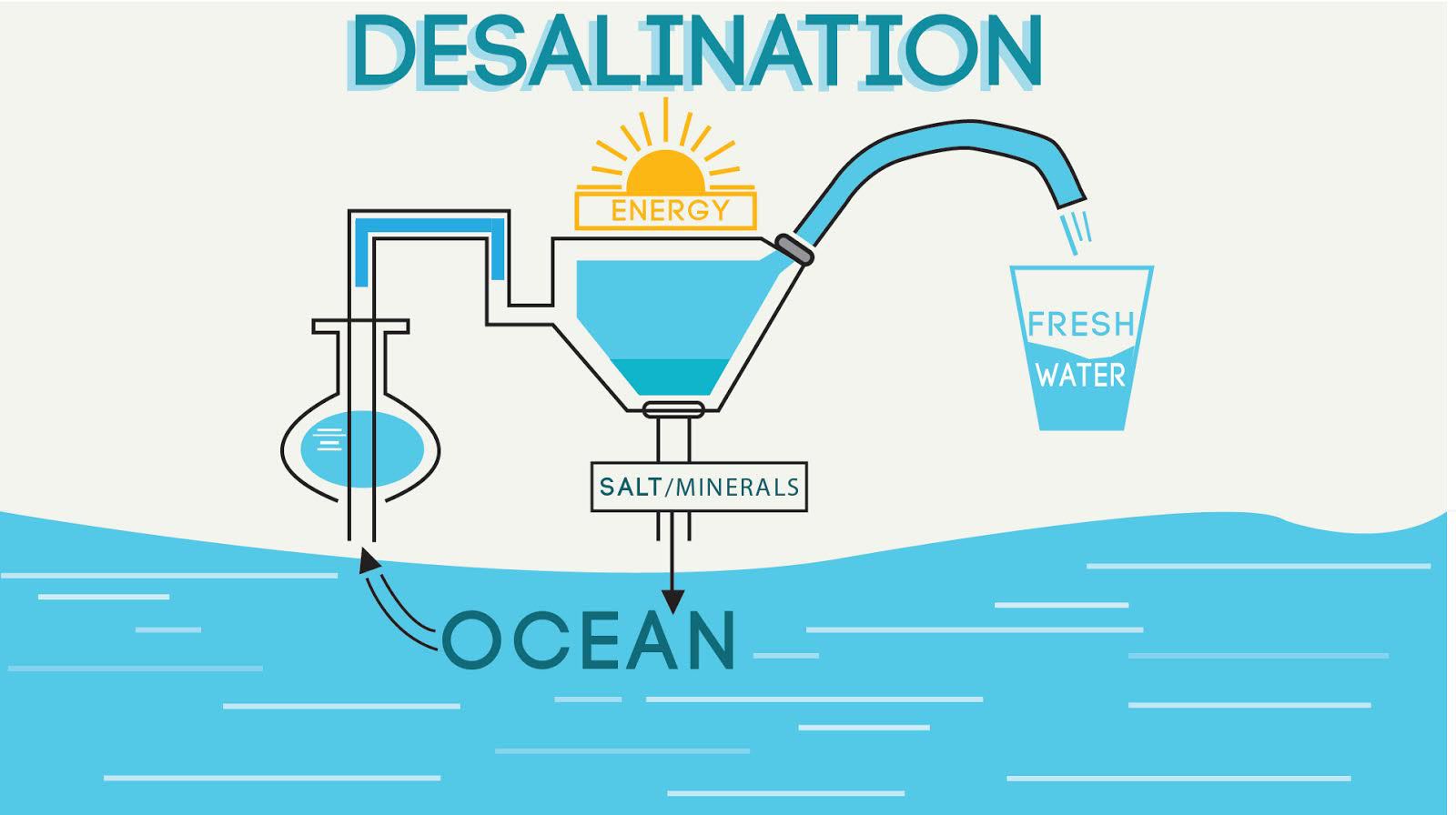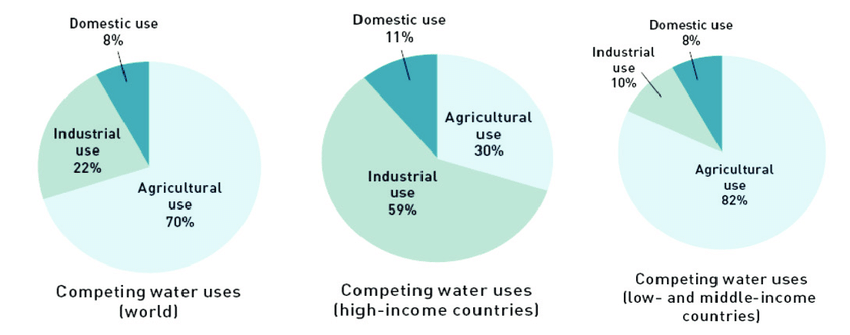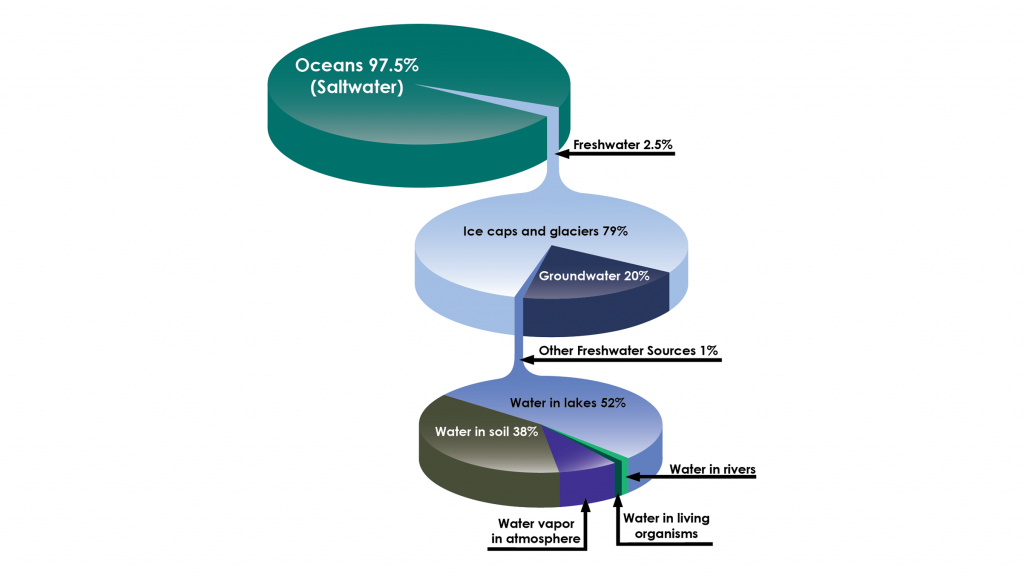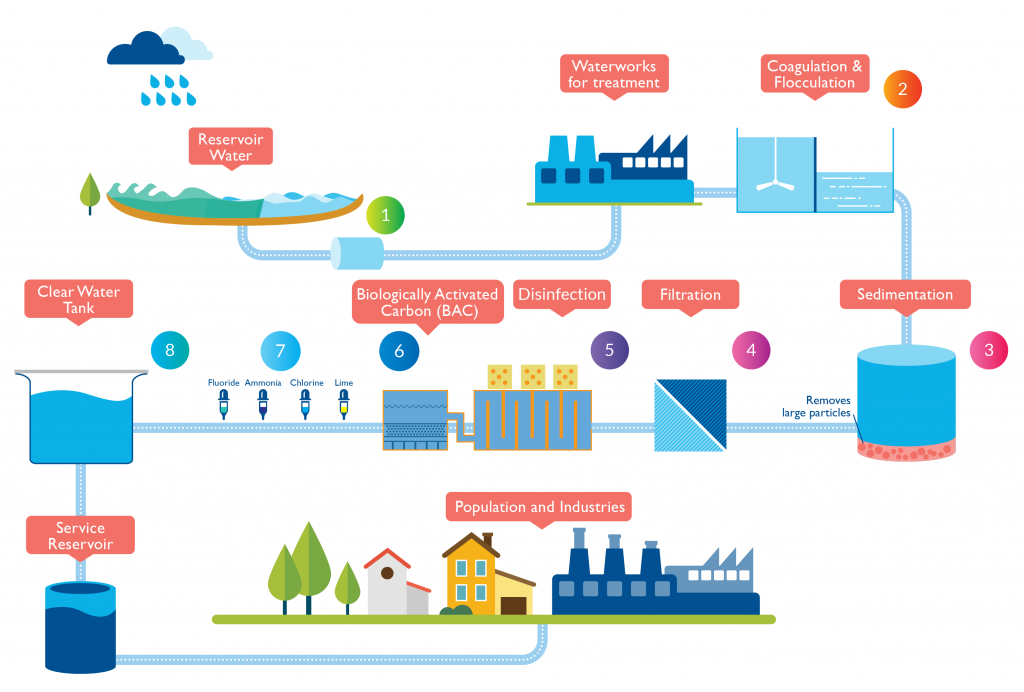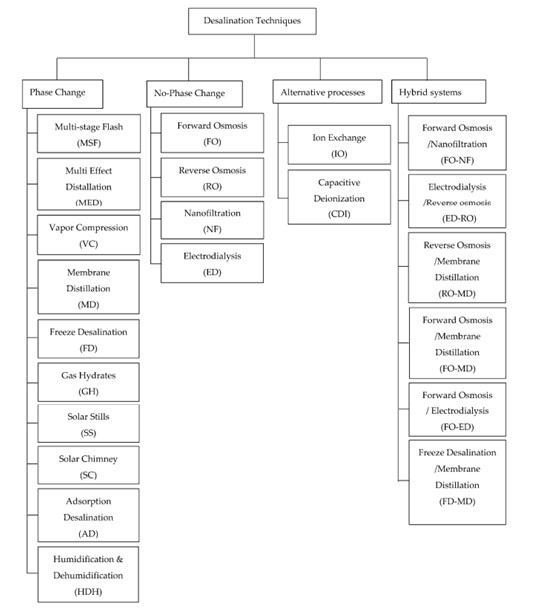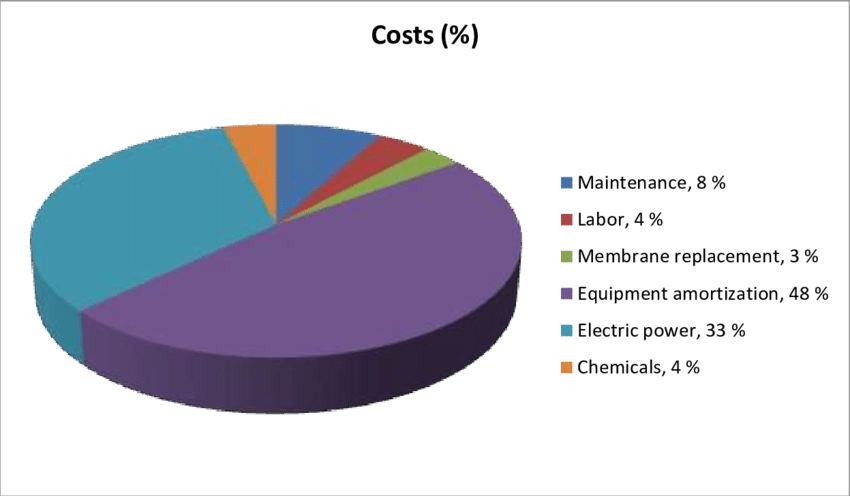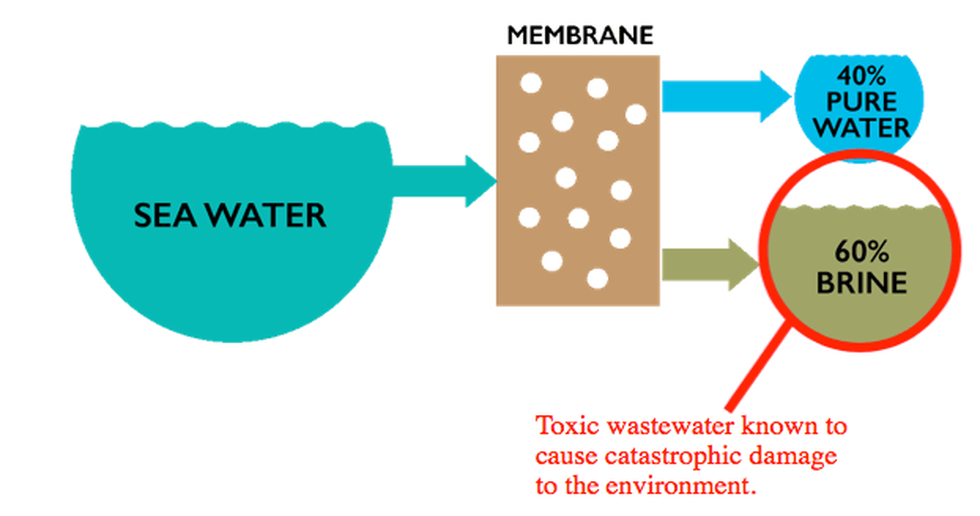Water is colorless, odorless, tasteless and an inorganic chemical substance that is the main constituent of all the existing living organisms. It is obvious that water is a much-needed resource and solution for the existence of life on the earth and probably on the whole universe.
The water can be used in both direct and indirect ways. Humans mainly use it for a few uses. Such as drinking, household needs, industrial usage, agricultural purposes, and recreational purposes. But there should be enough amount of fresh & clean water that is suitable for human consumption. It’s quite obvious that a large amount of water has been used for agricultural applications in the world. But the countries which have a higher GDP, or an income use more chunk of water for industrial applications as well.
For those applications, humans need to obtain fresh and clean water. Even though the whole earth is filled with water, we can only use a very little amount of water from that. Over 97% of the earth’s water is seawater. And only 2.5% of the earth’s water is freshwater. And only 1% of that water can be used for major applications which were mentioned above. And that needed amount of water is taken by a very limited number of sources such as surface water, underground water, and rain. These resources are very limited, therefore now we are in danger with the ongoing climate change.
Even though the freshwater sources are limited, humans use nearly 10 billion tons of water daily. And globally we humans use 4 trillion cubic meters of freshwater. Water has been a vital part of all kinds of food humans eat every day. And water is used in every product we are using right now such as cotton, paper, and so on. Therefore, a single person alone consumes nearly 3496 liters of water per day.
We are running out of fresh water. According to some data and statistics, the available freshwater will only last for only 17 years. This fact shows us that we are in grave danger of having enough fresh water in the future. The following facts and figures show the real magnitude of the water scarcity we are facing and will have to face.
- 2.3 billion people live in water-stressed countries, and 733 million of them live in critically water-stressed countries. (UN-Water 2021)
- 3.2 billion people live in agricultural areas with high water scarcity, of whom 1.2 billion people – roughly one-sixth of the world’s population – live in severely water-constrained agricultural areas. (FAO,2020)
- Today, 1.42 billion people, including 450 million children live in areas of high or extremely high-water vulnerability. (UNICEF, 2021)
- About 4 billion people, representing nearly two-thirds of the global population, experience severe water scarcity during at least one month of the year. (Mekonnen and Hoekstra, 2016)
- 72% of all water withdrawals are used by agriculture, 16% by municipalities for households and services, and 12% by industries. (UN-Water 2021)
- When a territory withdraws 25% or more of its renewable freshwater resources it is said to be ‘water-stressed’. Five out of 11 regions have water stress values above 25%, including two regions with high water stress and one with extreme water stress. (UN-Water 2021)
It is a notable fact that there is a serious water crisis happening in front of us threatening humankind and its extinction. Drinking water is mainly derived from springs and underground water sources. Underground water sources and glaciers have the purest form of water. But researchers have found that water can also include heavy metals like arsenic, lead, and more due to industrial waste dumped by high-profile companies and factories. Unsafe wastage management systems and the massive use of chemical fertilizers have polluted these pure waterways and springs. Therefore, it has been an essential task to remove unnecessary and toxic materials and particles from the water and make it safe for human consumption.
And humans have to search and research for other water resources as well and make them human consumable. Oceans have filled with water. But ocean water has been saturated with salt and other minerals. That fact makes this ocean water not suitable for direct human consumption. If we can purify seawater and make them safe and suitable for human consumption, that will be a huge win. That’s why water purification is important. Water purification can help humankind to survive with water crisis and scarcity.
Currently, the most popular and practically implemented water purification methods are as follows.
- Boiling
- Sedimentation and decantation
- Chlorination of water
- Activated carbon filtration
- Membrane filtration
- Solar disinfection methods
- Photocatalyst water purification
- Desalination & etc.
So, what is desalination?
Desalination is the process of removing salt and other mineral particles from seawater. It is a process of making ocean water suitable and safe for human consumption. Oceans bear 97% of the world’s water. Therefore, the ocean can be the most reliable water source for humankind. But this ocean water is filled with some other minerals such as salt, magnesium, calcium, potassium, and so on. In 1 kg of seawater, there is nearly 35 g of salt and other minerals. When making this seawater suitable for human consumption, those minerals should be removed from the seawater.
In desalination, mainly there are two types of desalination can be seen.
- Thermal desalination (Phase change desalination)
- Desalination by reverse osmosis (No-phase change desalination)
And they are alternating desalination techniques are present such as hybrid systems and ionization techniques.
This water purification method is really popular in middle east countries. Desalination has become their primary option for having freshwater for human consumption, agricultural applications, and other industrial applications. And more developed countries like the USA, Singapore, and Australia also depend on desalination techniques to supply fresh and clean water to their people. Australia is one of the first countries to adopt desalination technologies alongside Kuwait and Saudi Arabia. Australia is the country with the highest desert percentage in its total land area. So, they are rapidly running out of freshwater sources. In the USA, states like California and Texas are suffering from water scarcity on a considerable scale. So, they are introducing new desalination plants in those states to satisfy their water needs. And for African countries, desalination can be an optimal solution for their severe water crisis but only if these desalination technologies are cheap and economically viable for them.
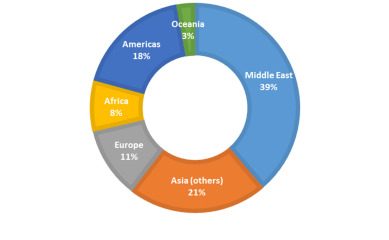
Desalination plants came to the surface of these commercial water purification systems in 1928 in water-stressed areas such as middle east countries. Since that beginning, research and studies have gone through this area to make this water purification method more cost-effective and ecologically viable. Since 2010, the size and the number of desalination plants have increased annually at a rate of nearly 6.8%. In the year 2019 alone, 155 new desalination plants have been introduced, purifying 5.2 million cubic meters of water per day. This growth is quite promising. As of early 2020, the capacity of global freshwater production by desalination was at about 97.2 million cubic meters per day.
Around the world, 16,876 desalination facilities are in use, 270 are being built, and 3825 are not. Since there are 14,360 active reverse osmosis plants, this means that reverse osmosis makes up 85% of all operational plants now in use. The Middle East has the largest operational desalination facilities, and this sub-region has 39% of the world’s desalination capacity. Given that there aren’t many natural freshwater sources in this area, this data shouldn’t come as a surprise. Even proposed smart cities such as Neom in Saudi Arabia mainly target desalination technologies as their primary water treatment and supply method. Not only in Saudi Arabia, but proposed cities in Singapore and Japan are also going to have desalination plants as their water supply solution.
Even though this water purification technique seems more magical and promising, this method is insanely expensive. Designing to maintaining a desalination plant is challenging for a country with a lower income. This is one of the main reasons that have caused limit this technology to rich and money-watering countries. Commercial desalination technologies can be categorized into two main parts. Such as reverse osmosis seawater desalination and thermal desalination. Removing salt and other minerals from seawater consumes a higher amount of energy. In thermal desalination, thermal energy is required to evaporate the seawater and make them free from salt and other minerals. In reverse osmosis desalination, electrical energy is required to overcome the osmotic pressure of the seawater. And these reverse osmosis desalination plants require 8-10 times more energy than traditional water purification plants and facilities. Currently, world-leading companies and researchers such as Lockheed Martin, Koch Industries, and LG are pouring loads of money in order to develop more economically viable methods to do seawater desalination.
Money is not the only problem with this promising water purification method. There is a huge environmental catch as well. After extracting this salt and other minerals from the seawater, this salt should be removed safely. The resultant solution rich with salt and minerals is called “brine”. This brine has an extremely high concentration of salt which can be harmful to ocean creatures and ecosystems near oceans such as mangroves and corals. And this highly saturated solution can be harmful to marine life as well. Therefore, these two factors, money, and brine production as a by-product have become the main evil to promote this technology to grow and spread, which is obviously stopping us to have more fresh and clean water.
Brine is the ultimate price of desalination. Brine is the remainder after the freshwater is taken out from the seawater. . The world produces nearly 96 million m3 of freshwater through desalination plants across the world per day while producing 140 million m3 of brine in a single day. Currently, there is no proper way to dispose of this byproduct. All the studies and surveys done have proven that the fact that desalination will be the next breakthrough in the water purification industry. The growth and potential of this industry are big and rewarding as well. But the price will have to be paid. Since there is no proper way of disposing of brine, there will be a huge environmental issue arising from this. When desalination technologies are developing rapidly going on par with all the industrial and emotional demands, environmental safety should go parallel with that too.
We will be able to use the mighty oceans as our ultimate resource of water very soon with more economically viable and environmentally sustainable methods. It’s almost time to drink the sea. My fingers are crossed…
Fun fact: Mother Nature has made this expensive desalination free and reliable. This same desalination process is happening in the water cycle. The sun evaporates the seawater and returns the freshwater by rain. This is literally what happens in thermal desalination plants.
Written by: Samuditha Saradindu
References
- Jara, A., Betemariam, A., Woldetinsae, G. and Kim, J., 2019. Purification, application, and current market trend of natural graphite: A review. International Journal of Mining Science and Technology, 29(5), pp.671-689.
- Wang, L., Hung, Y. and Shammas, N., 2007. Advanced Physicochemical Treatment Technologies. [New York]: Humana Press Inc., pp.329-363.
- Ritchie, H. and Roser, M., 2022. Water Use and Stress. [online] Our World in Data. Available at: <https://ourworldindata.org/water-use-stress#global-freshwater-use> [Accessed 26 September 2022].
- Who. int. 2022. Drinking-water. [online] Available at: <https://www.who.int/news-room/fact-sheets/detail/drinking-water>
- Jones, E., Smakhthin, V. and Qadir, M., 2018. The state of desalination and brine production: A global outlook.
- Eke, J., Yusuf, A., Giwa, A. and Sodiq, A., 2020. The global status of desalination: An assessment of current desalination technologies, plants, and capacity. Desalination, 495, p.114633.
Image Courtesies
- Featured Image: https://bit.ly/3Fb1XmI
- Content Image 1: https://bit.ly/3Pfa8Dg
- Content Image 2: https://bit.ly/3hkgd4H
- Content Image 3: https://bit.ly/3PnRKZ6
- Content Image 4: https://bit.ly/3VQBXEC
- Content Image 5: https://bit.ly/3UP0YP3
- Content Image 6: https://bit.ly/3FGG7Jg
- Content Image 7: https://bit.ly/3FlGmYW
- Content Image 8: https://bit.ly/3WoLXov

